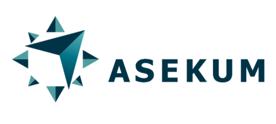How future workspace will change?

Organizations we know and have seen are facing a challenge of having to few people for the amount of work they have to do. People available for work in back-office operations are scarce so it is a challenge to maintain the right team to keep the operations up and running. On top of this, many tasks that people are doing should have been automated long ago Their repetitive, tedious and error prone character means that these tasks should not be done by people any more and are perfect for robots.
We usually see that a typical team of 10 people has 7 more experienced and advanced specialists and 3 more junior members who are much more prone to attrition. This naturally leads to a situation where it is tempting to allocate the more tedious and repetitive tasks to the less experienced workers, what fuels the attrition even more.
Hence, having robots on board generally raises motivation as the most undesired jobs can be done by them and people, having Digital Teammates working shoulder by shoulder, can eventually focus on more creative and developing tasks what eventually leads to much more attractive workplace.
As we generally observe that typical robotization potential is ranging from 20% to 30% of processes, we can safely say that robots are perfectly fit to fill in the positions which are associated with highest rotation and the whole workplace immediately becomes way more attractive for the whole team, including the newcomers.






